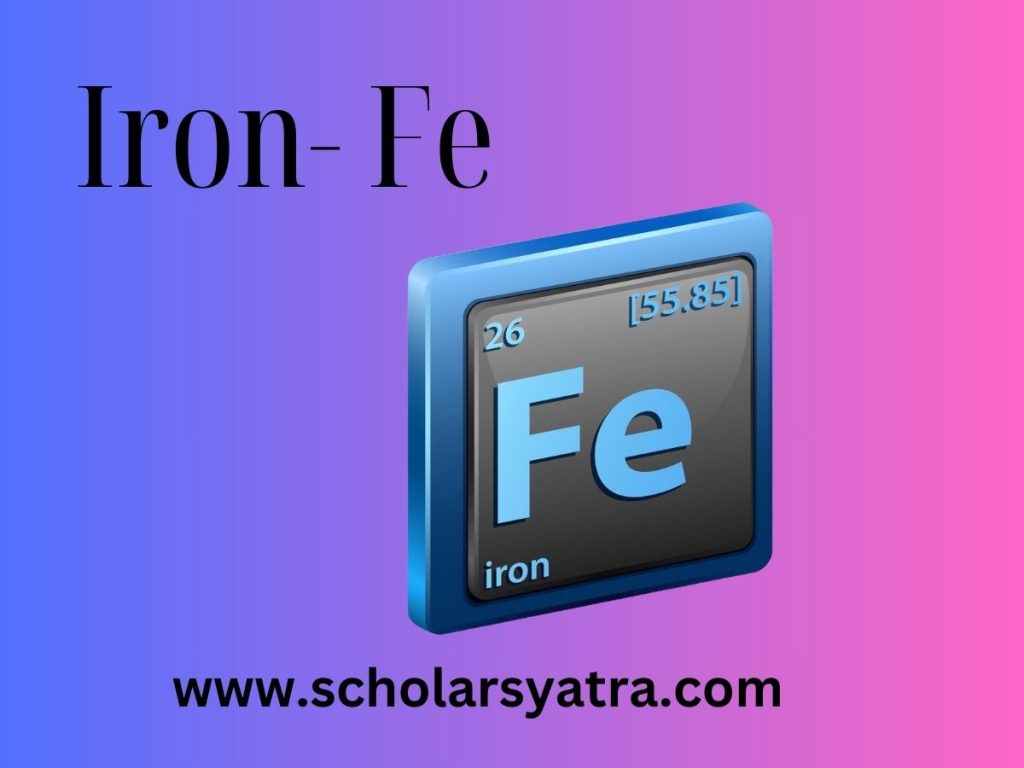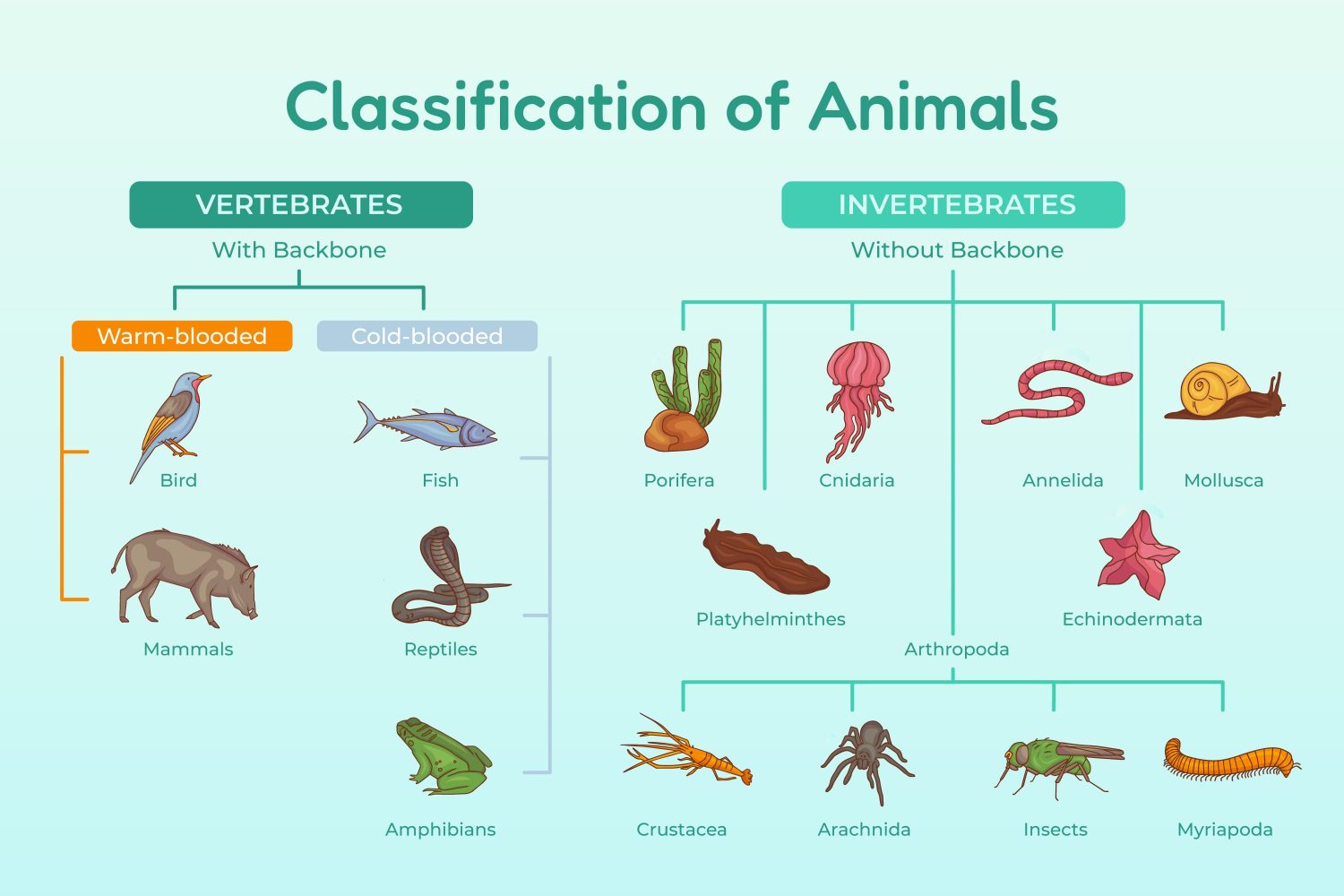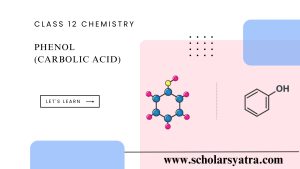Introduction to Iron
Iron (Fe) is a chemical element with atomic number 26, belonging to the transition metals in the periodic table. It is one of the most abundant elements on Earth and is essential for life. Iron is known for its strength, malleability, and ability to conduct heat and electricity. It forms the backbone of modern infrastructure and is a key component in steel production, which is used in construction, transportation, and manufacturing.
Table of Contents
ToggleMAIN ORES OF IRON
i) Haematite (Fe2O3)
ii) Magnetite (Fe3O4)
iii) Siderite (FeCO3)
iv) Iron pyrite (FeS2)
v) Limonite (2Fe2O3.3H2O)
Iron is mainly extracted from its ore haematite (Fe2O3). The main steps involved in the extraction are:
a) Crushing and pulverization
Big lumps of haematite ore are crushed into small pieces using a jaw crusher and pulverized into a fine powder using a ball mill.
b) Concentration
The pulverized ore is concentrated by gravity separation and magnetic separation (froth floatation is used for iron extraction from iron pyrite).
c) Roasting
The concentrated ore is then heated over air in the reverberatory furnace. This is called roasting.
Advantages:
i) Moisture is removed.
ii) Impurities such as Carbon, phosphorus and Arsenic are removed as volatile oxides.
iii) Iron carbonate is converted into ferric oxide.
The formation of ferric oxide prevents slag formation and the reaction between ferrous oxide and silica which prevents the loss of iron.
iv) The entire mass becomes porous, which facilitates the reduction of spongy iron.
d) Smelting
The roasted ore is then heated with a mixture of coke and limestone (CaO) in the blast furnace. Iron is reduced to metallic iron. This is called smelting.
Blast furnace:
The blast furnace is a tall cylindrical furnace made up of steel and internally lined with fire-resistant bricks.
The charge (coke + ore + limestone) is introduced from the top having a double-up and cone arrangement. The ore is heated up using hot air (nearly 7000C). Different heat zones are formed inside the furnace.
i) Zone of combustion (1500 – 17000C)
It is the hottest zone where the combustion of coke takes place.
This is an exothermic reaction and releases a high amount of energy and the temperature reaches 17000C.
At this temperature, carbon dioxide is unstable and reduces to CO.
ii) Zone of reduction (3000C to 7000C)
In this region, the reduction of haematite ore into metallic iron takes place. CO acts as a reducing agent.
iii) Zone of slag formation
In this region, limestone (CaCO3) decomposes to form quicklime CaO which is a basic flux and removes acidic impurities such as silica (SiO2) in the form of calcium silicate (CaSiO3).
iv) Zone of fusion ( 1200 to 15000C)
In this region, metallic iron changes into molten mass along with slag. Some iron ores that escape reduction in the zone of reduction get reduced to iron in this region.
Slag, being lighter than molten iron, floats over it. Slag is taken out from the slag outlet and molten iron is from the molten iron outlet. Molten iron then runs over the sand mould and cools slowly. The iron thus obtained is called ‘pig iron’.
TYPES OF IRON / COMMERCIAL FORMS OF IRON
There are three types of iron.
i) Pig iron/Cast iron
ii) Wrought iron
iii) Steel
1) Pig iron/Cast iron
When pig iron is melted and solidified, it expands slightly. So, it is useful in casting objects, hence named cast iron.
It is of two types:
i) White cast iron: When molten iron is cooled suddenly, it is called white cast iron and contains a high amount of iron carbide (Fe3C) and a low amount of graphite.
ii) Grey cast iron: When molten carbon is cooled slowly, grey cast iron is obtained which contains a very low amount of iron carbide (Fe3C).
Properties
i) Cast iron is hard, brittle and gets easily rusted.
ii) It is the most impure form of iron and contains carbon impurities (2.5% to 5%) along with other impurities like S, P, Si, Mn, etc.
iii) It is used to make stoves, toys, railways, etc.
Wrought iron
i) It is the purest form of iron and it contains the lowest percentage of carbon (0.1% to 0.25%).
ii) It is soft, elastic and rust-proof.
iii) It is used to make chains, anchors, bolts, and agricultural tools.
Steel
It contains an intermediate amount of carbon (0.25% to 2.5%).
Types of steel
i) Mild steel: It contains the lowest percentage of steel.
ii) Hard steel: It contains the highest percentage of steel.
iii) Alloy steel: The properties of steel can be enhanced by the addition of other metals. They are called special or alloy steel.
| Steel | Composition | Properties | Uses |
| 1) Stainless steel | Nickel = 8%
Chromium = 18% |
Hard and rust-proof | Utensils, cutlery, watches, cycles |
| 2) Nickel steel | Nickel = 2.4% | Hard, elastic and rust-proof | chairs, automobiles and aeroplane parts |
| 3) Invar | Nickel = 36% | Very low expansion on heating | meter scale, clock pendulum |
| 4) Tungsten steel | Tungsten = (14 -20%)
Chromium = 3 – 8% |
Resistant to corrosion | High speeding tool |
| 5) Manganese steel | Mn = 12 – 15% | Extremely hard | Burglar-proof safes, rock crusher |
| 6) Silicon steel | Silicon = 85% | Acid proof | Pumps and pipes carrying acid |
| 7) Perma alloy | Nickel = 78% | Magnetized on passing electricity but demagnetized when electricity is cut off. | Electromagnets |
| 8) Alnico | Aluminium= 12%
Nickel = 20% Cobalt = 5% |
Magnetic | Permanent magnet |
DIFFERENCE BETWEEN CAST IRON and WROUGHT IRON AND STEEL
| Cast iron | Wrought iron | Steel |
| 1. It is the most impure form of iron and contains the highest percentage of carbon ( 2.5% – 5%). | 1. It is the purest form of iron and contains the lowest percentage of carbon (0.1% to 0.25%). | 1. It contains intermediate amount of carbon (0.25% to 2.5%). |
| 2. It is hard and brittle. | 2. It is soft and elastic. | 2. It has intermediate hardness and elasticity. |
| 3. It gets rusted easily. | 3. It is rust-proof. | 3. It is rust-proof. |
| 4. It is difficult to magnetize. | 4. It is magnetized easily but not permanently. | 4. It can be magnetized permanently. |
Properties of iron
a) Action of air: Iron is unaffected by dry air. When heated in air, iron is converted into ferrosoferric oxide.
b) Action of water: Iron is unaffected by water alone. When steam is passed over iron, hydrogen gas is produced.
c) Action of nitric acid
Concentrated fuming nitric acid renders the passivity of iron. It is due to the formation of a very thin layer of oxide on the surface of iron which prevents further reaction of nitric acid.
d) Action of sulphuric acid
e) Action with nonmetals
When iron is heated with
i) Carbon, iron carbide is formed.
ii) Sulphur, iron sulphide is formed.
iii) Chlorine, ferric chloride is formed.
iv) Carbon monoxide and carbon pentacarbonyl are obtained.
f) Metal displacement reaction
Iron displaces less electropositive metals like copper from its salt solution.
MANUFACTURE OF STEEL
A) Bessmer’s process
B) Siemens-Martin process
A) BESSMER’S PROCESS
In this process, steel is produced from cast iron by removing its carbon impurities with a blast of air. Initially, wrought iron is produced which is converted into steel by adding the required amount of carbon in the form of spiegeleisen. Steel is produced in the Bessmer’s Converter.
Bessmer’s converted is a pear-shaped furnace. It is made of steel and internally lined with acidic oxide (SiO2) or basic oxide (MgO and CaO) depending upon the nature of impurities present in the cast iron.
a) Acid Bessmer process
In this process, the Bessmer converter is internally lined with an acidic oxide such as silica (SiO2). Such a process is carried out if the cast iron contains a large amount of Manganese impurities. When a blast of hot air is passed into the converter, oxide of manganese is formed which is removed as a slag.
b) Basic Bessmer process
In this process, the Bessmer converter is internally lined with basic oxides such as quick lime (CaO) and Magnesia (MgO). Such a process is carried out if the cast iron contains a lot of phosphorus impurities. When a blast of hot air is poured into the converter, the oxide of phosphorous is formed which is removed as slag.
Carbon and sulphur are converted into their oxide CO and SO2 and they escape from the mouth of the furnace. The blue flame of CO (Bessmer’s candle) continues till all the carbon is converted into CO. When the blue flame ceases, the passing of hot air is also stopped. Then, the calculated amount of carbon is added to molten iron in the form of spiegeleisen and the steel is obtained.
Spiegeleisen: It is an alloy of Manganese (20 – 30%) carbon (5%) and Iron (remaining percentage).
Roles of spiegeleisen
1) It acts as a scavenger (cleaning agent).
Manganese present in spiegeleisen removed O2/N2, S, P from molten cast iron in the form of Manganese oxide (MnO), Manganese nitrite(Mn3N2), MnS (Manganese sulphide) and manganese phosphide (Mn3P2) respectively.
Oxygen and Nitrogen should be removed. Otherwise, they form blowholes on the surface of the steel while cooling thereby weakening the steel.
Sulphur should be removed as MnS to prevent the harmful effects of sulphur.
2) It acts as a deoxidizer and removes oxidized iron if present.
3) It is added to the molten iron to maintain the required amount of carbon in steel.
OPEN HEARTH PROCESS OR SIEMENS-MARTIN PROCESS
It is a process based on the regenerative principle of heat economy. In this process, steel is obtained from cast iron and this process is carried out in the open-hearth furnace or regenerative furnace. The furnace is internally lined with Silica (SiO2) if manganese impurities are present and with dolomite (MgO.CaO), phosphorous impurities are present. The furnace is heated up to 15000C using producer gas (CO+N2).
The charge consists of cast iron, scrap iron, hematite ore and quick lime. The impurities present in the cast iron are removed by the oxidation with haematite.
The molten iron is taken out from time to time to check the composition of the molten iron. The required amount of carbon is added in the form of spiegeleisen. Steel of superior quality is obtained from this process and this process is completed in 8-10hrs.
Advantages of Open-hearth process over Bessmer’s process
1. Temperature can be controlled as heating is done from outside.
2. As the process is slow, the composition of steel can be checked frequently and steel of superior quality can be obtained.
3. Loss of iron is less i.e. 4% which is less than that in Bessmer’s process (15%).
4. Iron scrap can be used in the manufacture of steel.
5) Fuel is saved due to the regenerative system of heating.
Differences between Bessmer’s process and the Open Hearth process
| Bessmer process | Open Hearth Process |
| 1. Impurities are oxidized by the blast of hot air. | 1. Impurities are oxidized by haematite ore. |
| 2. Temperature and composition cannot be controlled. | 2. Temperature and composition can be controlled. |
| 3. Steel of inferior quality is obtained. | 3. Steel of superior quality is obtained. |
| 4. The process is completed in a short duration ( less than half an hour). | 4. This process takes a longer time to complete. |
| 5. The regenerative system of heating is not available. | 5. Fuel is saved by the regenerative system of heating. |
Heat Treatment of Steel
a) Hardening or quenching
When mild steel is heated up to red brightness and cooled suddenly by plunging in oil or water, the steel becomes hard and brittle. This process is called hardening or quenching and the steel obtained is called quenched steel. The hardness is due to the formation of iron carbide (Fe3C) or cementite.
ii) Annealing
When hard steel is heated up to red hot and allowed to cool slowly, the steel becomes soft and malleable. This process is called annealing and the steel obtained is called annealed steel. The softness and malleability of steel are due to the decomposition of iron carbide into graphite during the cooling process.
iii) Tempering
When the quenched steel is heated up to 2300 to 3000 C, a temperature less than which causes red hotness, and allowed to cool suddenly the steel retains its hardness but no brittleness. This process is known as tempering and steel obtained is tempered steel.
Tempering, in a word, is quenching followed by annealing.
RUSTING OF IRON
When iron is exposed to moist air, a red-brown substance forms on its surface is known as rust. Chemically, rust is a hydrated ferric oxide.
Conditions for rusting
Rusting occurs in the presence of
i) Moist air
ii) Weakly acidic atmosphere (presence of CO2)
iii) Impurities
Electrochemical theory of rusting
Rusting of iron is an electrochemical process. Due to the presence of impurities and the uneven surface of iron, regions of different potentials are developed on the surface of the iron. Because of this, a tiny cell is formed on the surface where water acts as an electrolyte. At the anode, iron is oxidized to a ferric ion and at the cathode, oxygen is reduced to a hydroxide ion.
At anode:
At cathode:
The ferric ion and the hydroxide ion combine to form ferric hydroxide which gets deposited as rust.
Prevention from rusting
i) By coating a thin layer of enamel, paints, varnish, grease, coal tar, etc: This prevents rusting of iron by acting as a barrier between the iron and the corroding environment.
ii) By passing steam over red hot iron: This prevents rusting of iron due to the formation of a thin layer of ferrosoferric oxide (Fe3O4) on the surface of the iron.
iii) By metallic coating
By coating iron surface with metals such as zinc, tin, aluminium, etc. iron is prevented from rusting in two ways:
a) By acting as a barrier between iron and corroding environment.
b) By cathodic protection.
Coating of the iron surface with zinc metal is called galvanization. It is generally carried out by dipping iron into a molten zinc path.
Zinc present rusting of iron by cathodic protection. When the zinc layer is depleted and iron is exposed, zinc acts as an anode being more electropositive and iron acts as a cathode in a tiny cell containing water as electrolyte. Zinc undergoes corrosion preferentially being anode thereby protecting ions from corrosion. The process is called cathodic protection and zinc is called sacrificial anode.
iv) By making an alloy of iron with nickel, chromium, silicon, etc.
v)By applying corrosion inhibitors like K2CrO4, H3PO4, conc. HNO3 and so on.
COMPOUNDS OF IRON
A) Green vitriol (FeSO4.7H2O)
B) Ferric chloride (FeCl3.6H2O)
C) Mohr’s Salt (FeSO4.(NH4)2SO4.6H2O)
A) Green vitriol (FeSO4.7H2O)
Preparation
i) Ferrous sulphate is prepared by the action of dilute sulphuric acid on Fe, FeO, Fe(OH)2, FeCO3.
Ferrous sulphate is then heated up to the crystallization point. On cooling, crystals of green vitriol are obtained.
ii) Ferrous sulphate is also obtained from Kipp’s waste.
Kipp’s waste is a ferrous sulphate solution
iii) Industrially, ferrous sulphate is obtained by slow oxidation of ion pyrite in the presence of moisture.
Sulphuric acid, then produced is heated with scrap iron to produce ferrous sulphate.
Green vitriol is obtained by crystallizing FeSO4 solution.
Properties
i) It is light green.
ii) Action with water: Green vitriol is soluble in water. Its solution is acidic due to hydrolysis.
iii) Action with air: When green vitriol is left in the air, it forms basic ferric sulphate.
iv) Action with heat: When green vitriol is heated, it loses its water of crystallization to form white anhydrous FeSO4. On further heating, it forms the ferric oxide.
v) Reaction with nitric oxide (NO): When NO gas is passed through the FeSO4 solution, a brown-coloured complex known as nitrosyl ferrous sulphate is obtained. This is the compound formed during the test of NO3– ion.
FeSO4 + NO → FeSO4.NO (nitrosyl ferrous sulphate) (brown ring)
vi) Action with acidified KMnO4/K2Cr2O7 solution
Ferrous sulphate solution reduced acidified KMnO4 solution and acidified K2Cr2O7 solution. This reaction exhibits the reducing nature of ferrous sulphate.
vii) Formation of Mohr’s salt
When an equimolar mixture of FeSO4 solution and (NH4)2SO4 solution is crystallized, crystals of Mohr’s salt are obtained.
viii) Reducing property
Ferrous ions reduced silver ions into metallic silver.
Uses
i) It is used in the preparation of writing ink.
ii) It is used in the preparation of Mohr’s salt as a reducing agent.
iii) It is used as a reducing agent.
iv) It is used as a source of iron in medicine.
v) It is used in dyeing and tanning industries







